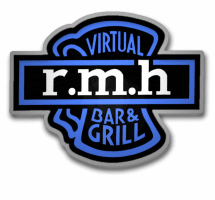rec.motorcycles.harley
General
Purpose
Welcome to the
r.m.h Bar & Grill
A VB&G Primer
Introductions
How to Get Flamed
Assholes(tm)
Buying a Drink
Posting Pictures
Advertising Guidelines
Brief netiquette guide
Why you should quote
Topics that have been beaten to death
Philosophical
Bikers
To Wave or Not to Wave
Synthetic
Oil
Synthetic Oil and Harleys
Technical
Wrenching
Dyna Frame
Bad Vibes
Rake and Trail
TC88
Cam Specs
(new!)
TC96
Carburetors
Extracting Broken Screws
Fuel Injection Intro
Heads -- Evo BT
Heads -- Shovel
Hop-up Suggestions -- BT
Hop-up Suggestions -- 883
Ignition
Lighting
Neat Stuff
Oil Cooler Fans
Packin' (tools)
Painting & Finish Maintenance
Pipes
Replacement Seats
Roadside Electrical Troubleshooting
Shocks
Tire Specifics
Tranny Lube
Riding
Buying
Selling
History
Harley
.net Resources
Et
cetera
Design and content © 2004
Mild Bill (Asshole #27)
StephG (Asshole#108)
Revisions/updates © 2006
Keeper of the FAQ's
Schmoe (Asshole #128)
r.m.h VB&G logo design © Jim Combs

Pipes
Cross-over Tube
By joining the two mufflers, the crossover tube reduces the resistance the exhaust gases must overcome, and allows the exhaust already moving down the pipe to suck the exhaust gases out of the cylinder whose valve has just opened. Both of these are Good Things. This is why the best performing aftermarket pipes for any type of motorcycle join the exhaust tubes.
Removing it by only replacing the stock headers will cause a power loss.
Porker Pipes and Drags
On the question of installing open drag pipes:
"unless you have had some engine modifications to allow for it, you _will_ be down on power (maybe more power than the stock, but less than if you used "tuned" pipes). Engines are built to compensate for a certain amount of back-pressure (i.e. the valves opening a little earlier), and if you remove the backpressure, the valves will be opening too early, letting some still-burning fuel into the headers. ... because of this, you can suffer (in extreme cases) from burnt exhaust valves if you hammer it too hard..." -- Mike Kelly
To calculate the proper length of drag pipes the following formula was pulled from The Design and Tuning of Competition Engines by Philip H. Smith
P = (A x S x D x D)/(1400 x d x d)P= pipe length in ft.A= exhaust valve opening in degrees of crankshaft rotation.S= stroke of engine in inchesD= bore in inchesd= exhaust valve port diameter in inches- (the
xis times and the/is divide)
Also...
"The pipe diameter internally is based on the dimensions of the valve throughway. This formula will do no more than ensure that the pipe is of adequate length to give a good pressure-wave action, particularly at higher speeds; it must be emphasized that there is no formula in existence which enables a system to be "designed" completely on paper, experiment being essential for the absolutely final result." [pgs 326-327 from the same above]
"In almost every case I've heard the 2 and 2 1/4 inch porker pipes hurt performance of the bikes they were installed on. They may look cool, they definitely sound different but they hurt your engine. The tried and true 1 3/4 inch drags are the only way to go when running straights. They should be right around [32-34] inches long from the exhaust port to be most effective. These pipes work the same for BT as well as XLs. Porkers do have a variety of baffles you can stuff into them to keep the dreaded pipe checking device from entering them. Don't know about the sound level though.
With any drag pipe set-up there will be a "soft" spot in the throttle. Where that occurs is up to where you have the carb set up and the cam you are using. Usually that spot is exactly the rpm where you cruise. ... why not try Thunderheaders? The difference in price is roughly 3 illegal pipes tickets." -- Jon Boulle
The WB catalog suggests slip-on mufflers or a Supertrapp 2-into-1 pipe with 18 discs and a racing open end cap over their own Porker Pipes for performance applications.
Recommendations
The following is a list of replacement exhaust systems, listed in order of performance as rated by r.m.h conventional wisdom. It is important to note that there is not a great deal separating the 1st four and that by far the slip-ons are considered the best value.
Bub Bad Dogs -- I used these on my Dyna and really liked them. My dynometer tests didn't show near the HP gains advertised but what else is new? One unexpected benefit is the greatly reduced vibration due to the reduced weight.
Python II -- Good mid and high range, though down on torque at low RPM
Cycle Shack
Supertrapp -- Quality control problems reported, tunable
Thunderheader -- Lots of power with lots of noise, especially @ high rpm. You'll either love or hate the distinctive way they look. Black or chrome.
SE Slip-on mufflers --
"It appears that the MoFoMoCo has taken steps to reduce the noise level produced by their prodigy. I believe that if you order a new set from the Stealer you will not get the the old "Cycle Shack" "Python" flap style baffled muffler. You will get a glass packed piece of shit with a penny sized hole in it for the exhaust to exit. I believe that the MoCo no longer sells the good mufflers under the SE flag" -Rick B.
V&H Pro Pipe HS -- This is a 2 into 1 performance pipe that V&H states is their best performing. V&H often gets excellent reviews on their fit and finish. Plus they are one of the few companies who include heat shields in the pipe's price.